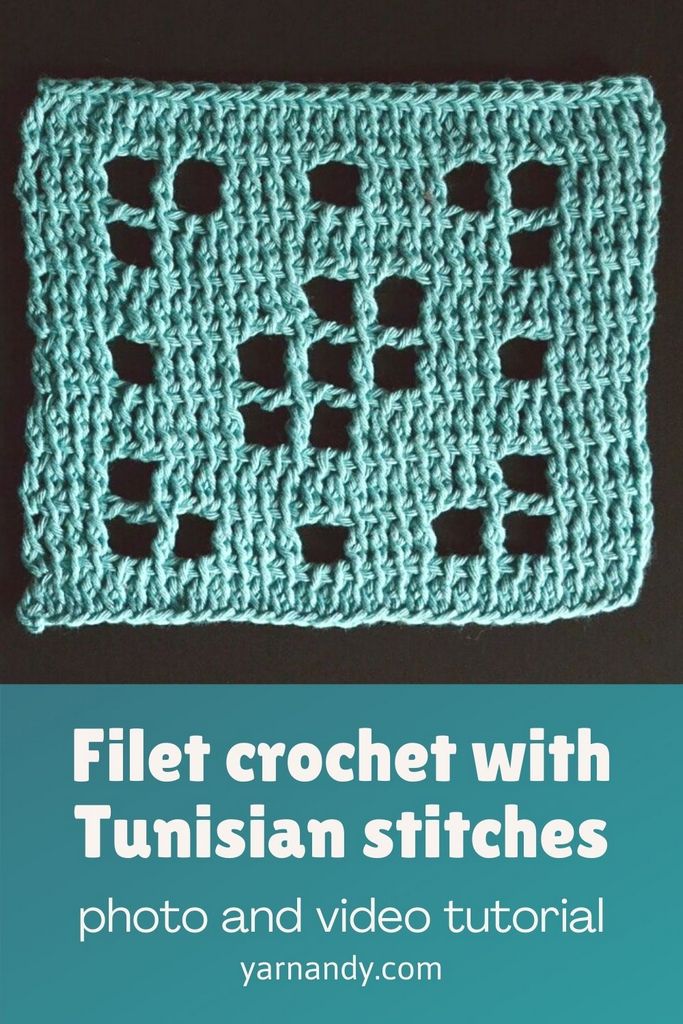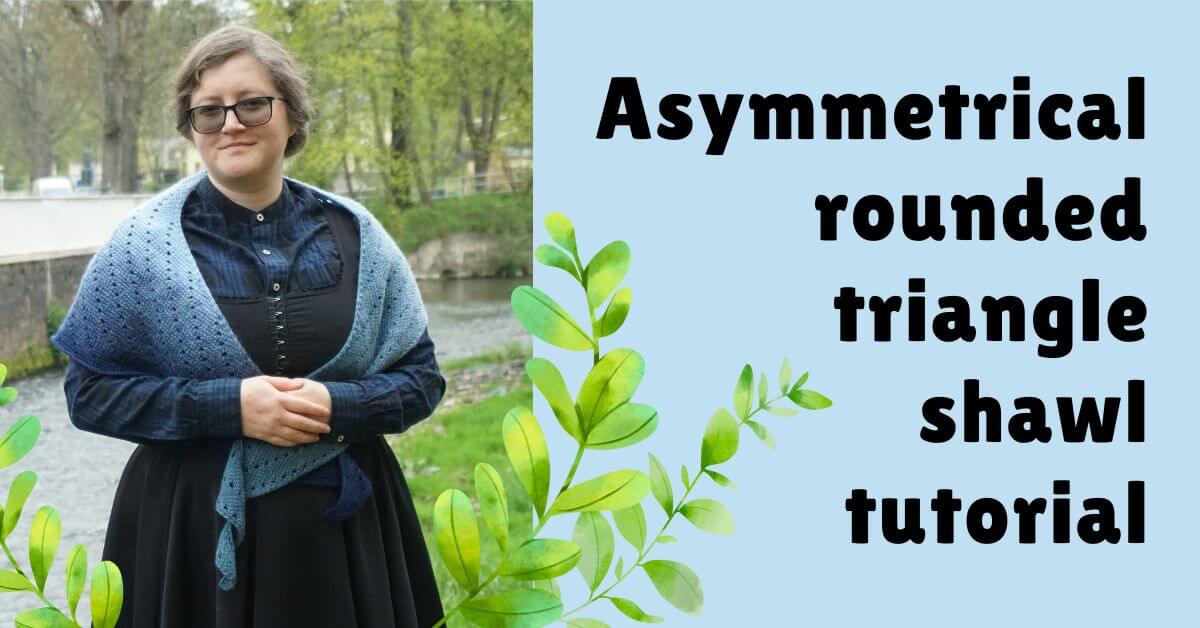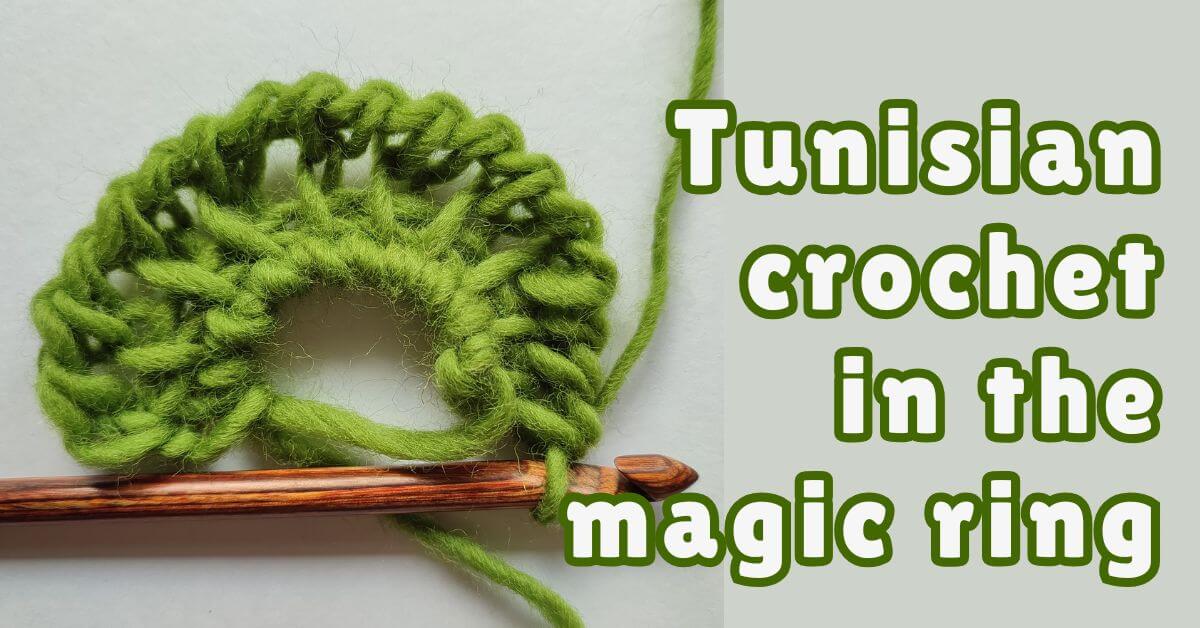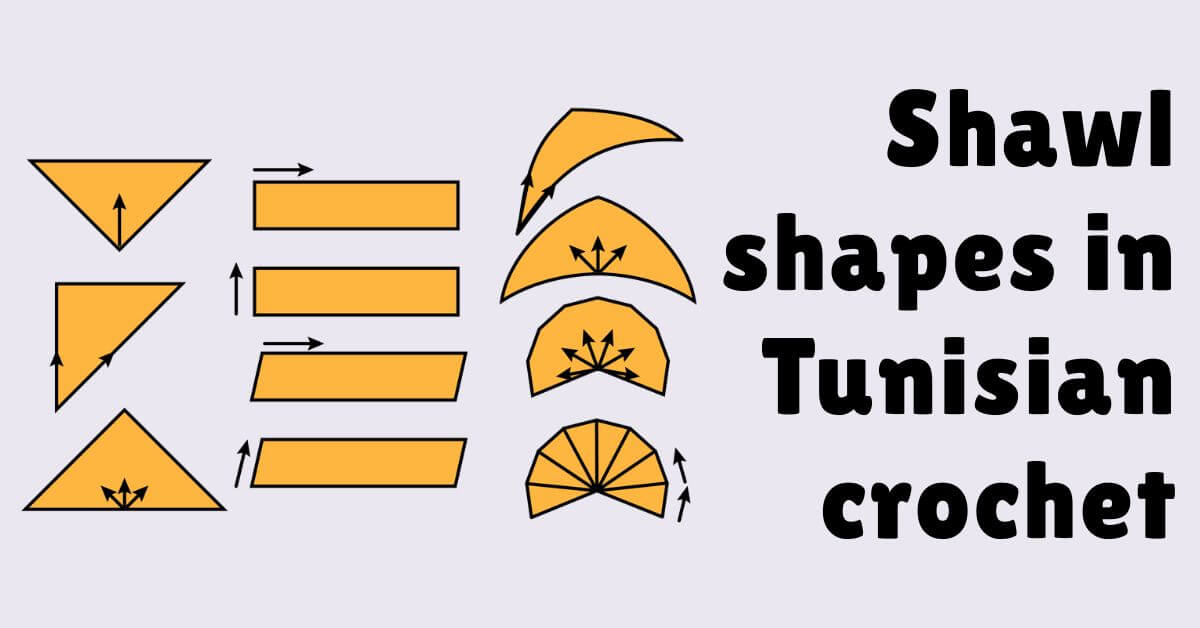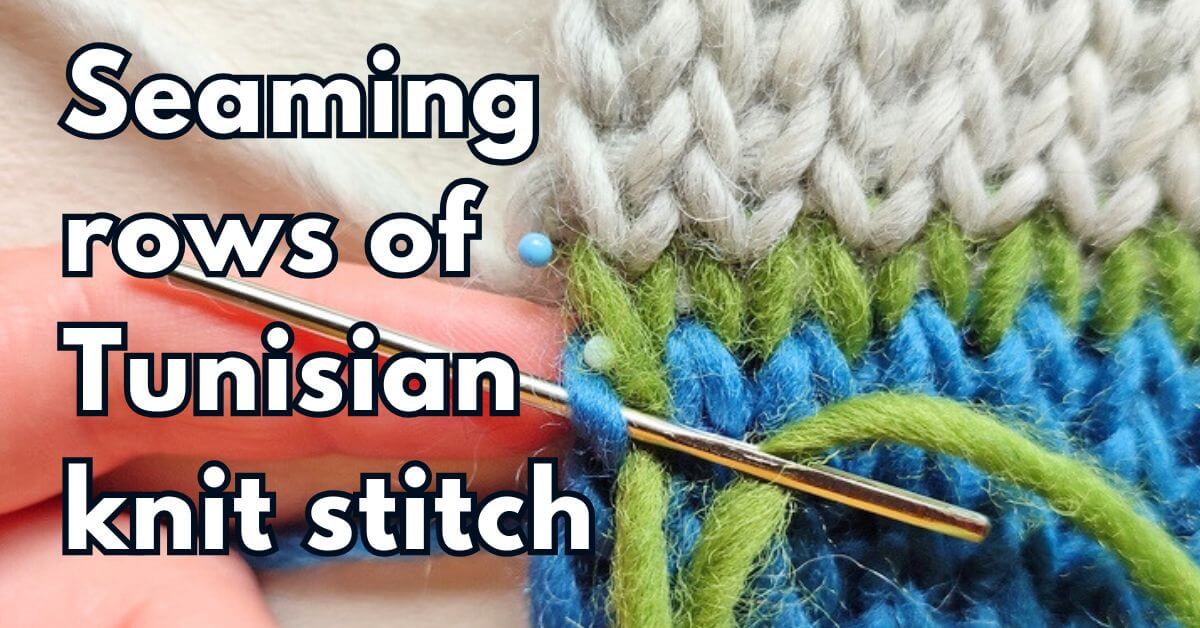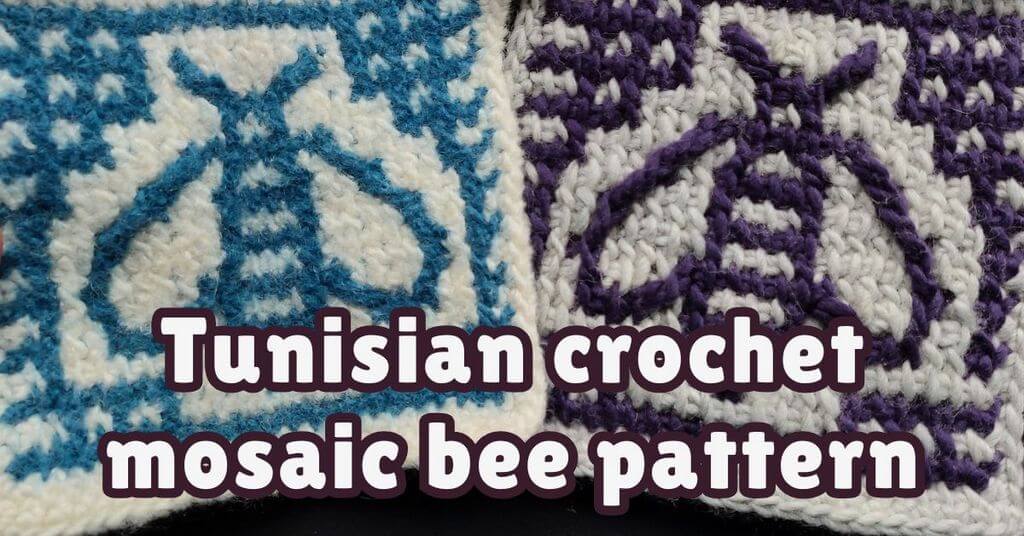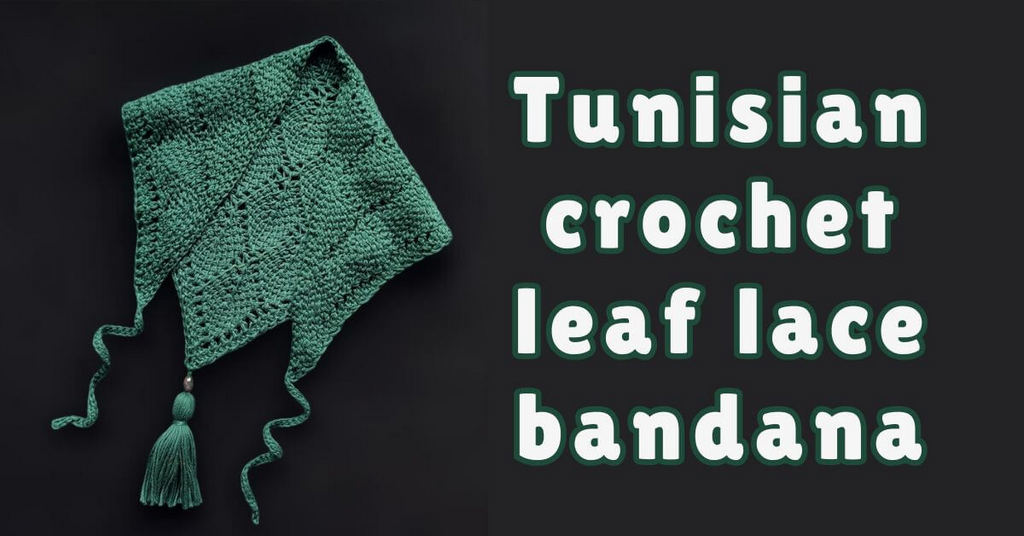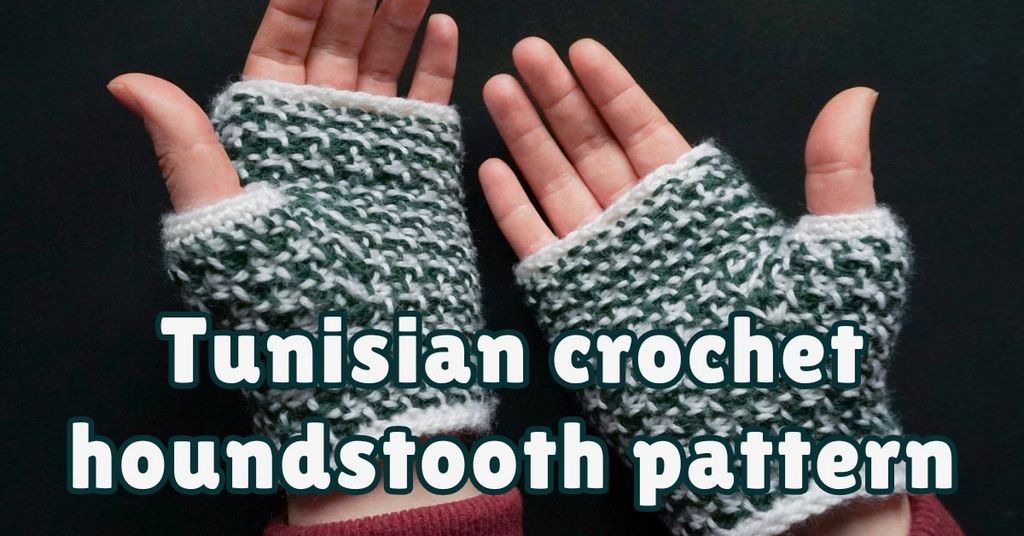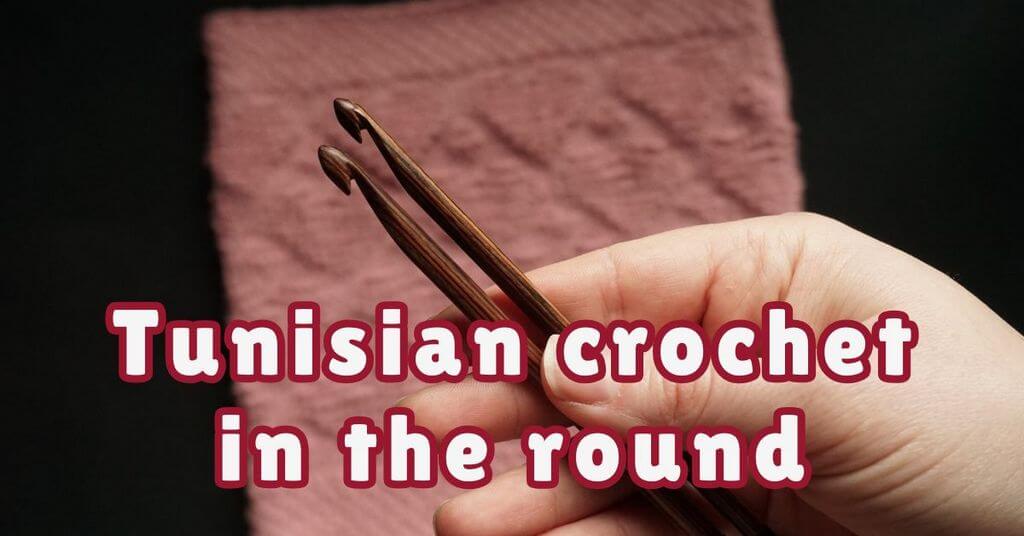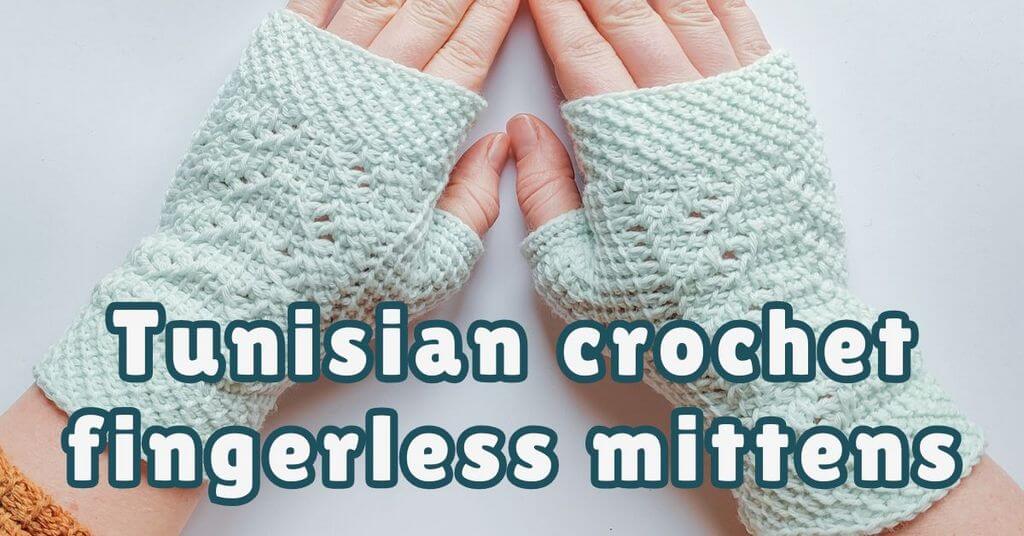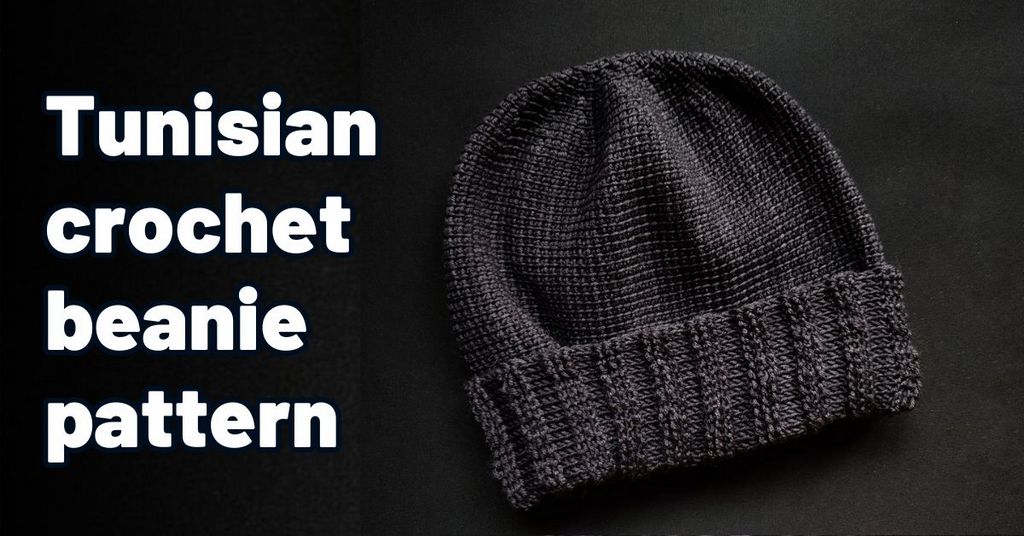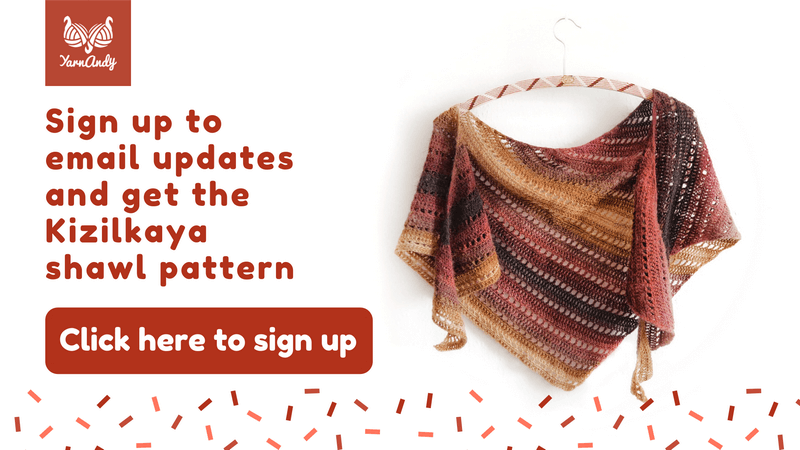Very easy! In this tutorial, you’ll learn how to make filet crochet with Tunisian crochet stitches, plus some tips and tricks to transform regular filet crochet patterns into Tunisian crochet filet patterns.
Maybe you like filet crochet, but have just discovered Tunisian crochet and fell in love with it and can’t find a way to reconcile the two very lovely crafts. Maybe you didn’t think it was possible (it definitely is!) or maybe you never thought about it, but are curious to try.
I’ll show you how to read a filet chart and use it with Tunisian crochet stitches.
But first we need to learn some stitches. You will need to know how to make Tunisian double stitches and how to make Tunisian extended stitches.
If you want your filet to have actual squares, you’ll be using extended double stitches. Pretty much like with regular crochet, which I explained in detail in its dedicated article.
Contents
Comparison between filet crochet and Tunisian filet crochet
So why would you want to make filet crochet using Tunisian crochet stitches, when you already have regular filet crochet?
You don’t have to, but once you see what a smooth and elegant fabric Tunisian crochet stitches make, you won’t want to use the old method.
First, look at the two samples in the photo below. Which one is more appealing?
They are both made with the same type of yarn, same hook size, same pattern, both made with extended double stitches.
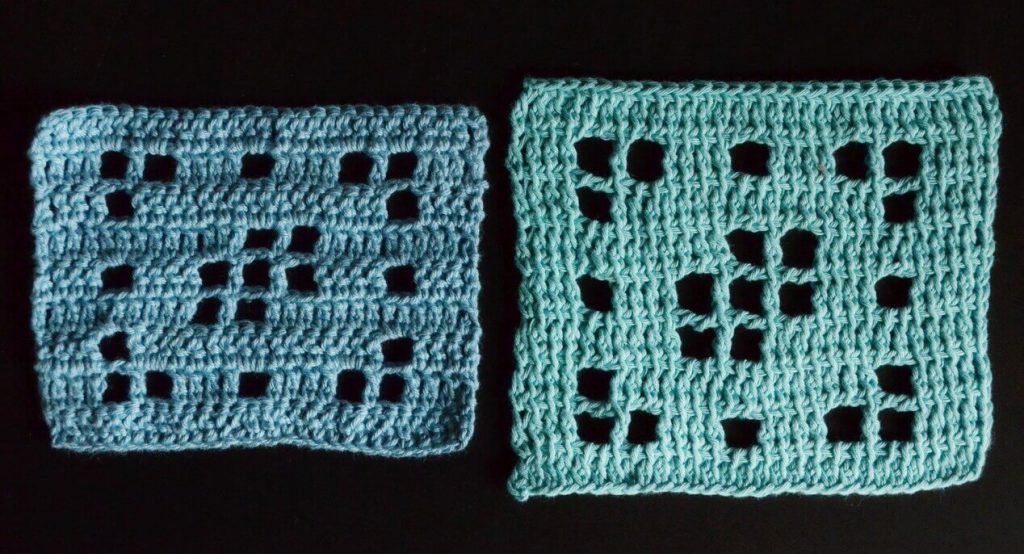
The one on the left is regular crochet, turning at the end of the row. The one on the right is made with Tunisian crochet, worked on the same side.
The regular crochet one looks similar on both sides and is very easy to do with very small hooks and very thin yarn (think size 8 thread and smaller).
But the Tunisian crochet sample has larger holes (the pattern is closer to square), the stitches all look the same, they don’t even lean to one side or another. The fabric looks smooth and silky.
It’s also really flat, which you can’t see in the photo, but the regular crochet sample has little waves on the surface due to the different texture and tension of the front and back of the stitches. This is typical of any regular crochet filet project that is not worked in the round.
Observations
In this tutorial I’ll be using double stitches, but you can start with extended double stitches, in which case you should chain 2 at the beginning of the row.
You can add a separate stitch for the last stitch, like I did in the photo tutorial, in which case you’ll add one more chain at the beginning, so you have 11 chains, not 10.
The pattern I’m using is an alternation of empty and filled squares, like a checkerboard.
Abbreviations
- TDs – Tunisian double stitch;
- TEDs – Tunisian extended double stitch;
- Tss – Tunisian simple stitch;
- YO – yarn over.
Step by step instructions on making filet crochet with Tunisian stitches
For this tutorial, we’ll use a very basic pattern. The empty squares will be open, the colored squares will be full.

Like with any Tunisian crochet project, you need to start with a foundation.
In this instance, I used a previous project, but you can start with a simple chain and Tss as a foundation.
You need a multiple of 3 stitches + 1 for the filet pattern, so you will chain 10 for example.
Pick up loops in all the back bumps of the chains. You will have one extra loop from the first stitch, which we don’t regularly count.
To begin the filet pattern, we chain 1. We skip the stitch under the first loop (the first stitch), YO and make a double stitch.
To make an empty square, we YO 2 times. We skip 2 stitches.
Next we have a full square. We make the next double stitch, plus two more. Don’t forget that you need to make an extra YO for the double stitch.
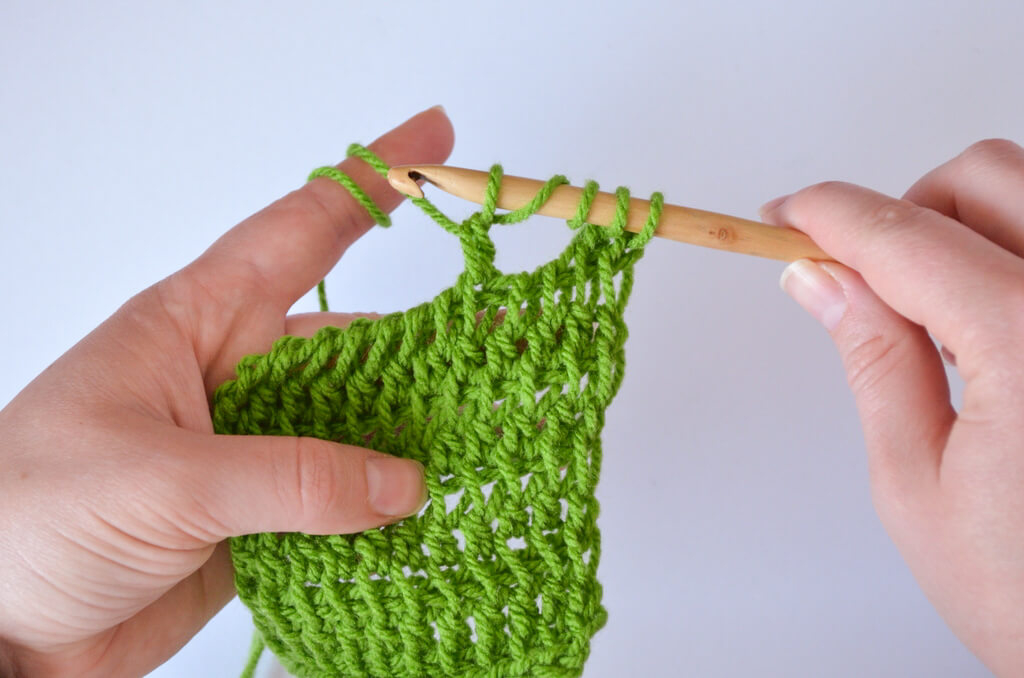
We continue with another empty square: one double stitch, YO twice, skip two stitches.
At the end of the row, we have the last double stitch of the pattern and the last stitch.
To make the last stitch, we YO, insert the hook behind the two vertical bars at the top of the last stitch, then finish the double stitch as usual.
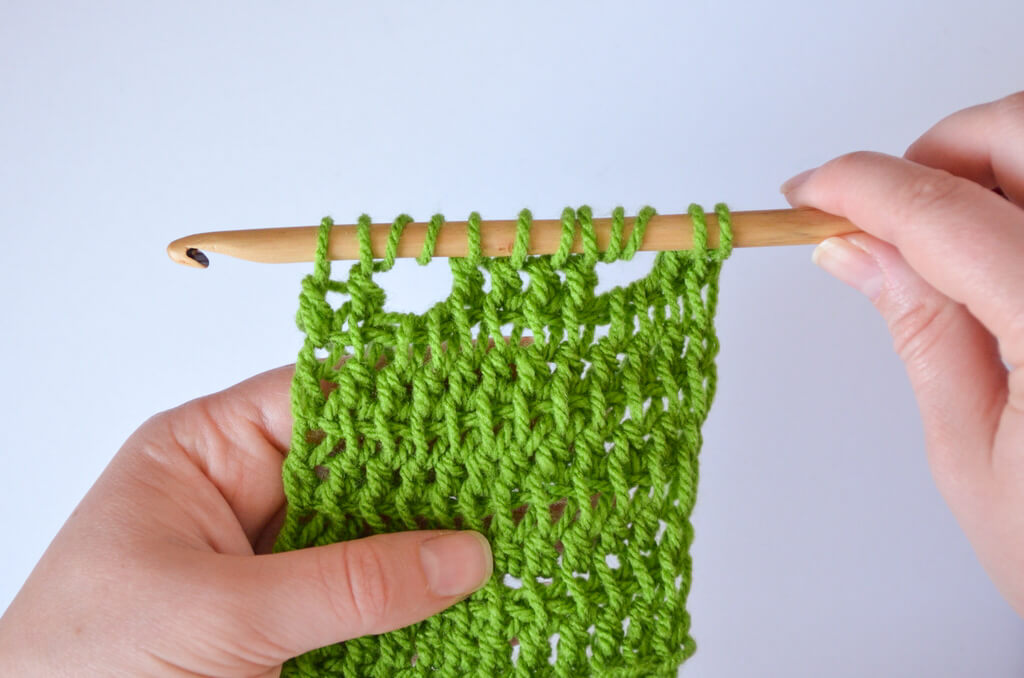
The return pass is not in any way special in this pattern. First, we Ch1 and then YO and pull through 2 loops to the beginning of the row.
By doing this for the eyelets, you’ll end up with horizontal trebles at the top of the eyelet. Cool, right?
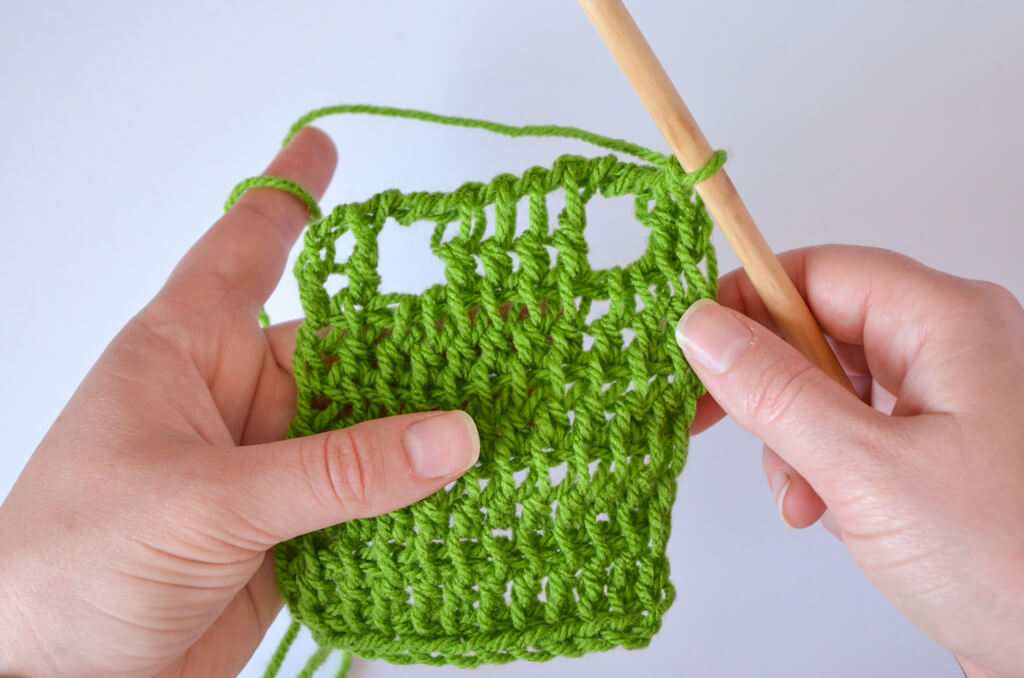
To continue in pattern, you Ch1 or Ch2, then look at the pattern. Next is a full square.
Make the first stitch regularly.
The next two stitches are worked in the eyelet. You can work around the horizontal bar, like in the photo below, or through it, like in the video (see below for video version).
Next comes an eyelet, so you have a double stitch and 2 YOs.
Then you have the last full square, so you have 3 double stitches. Then the last stitch in the pattern, then the last stitch on the edge.
Then you do the return pass as usual.
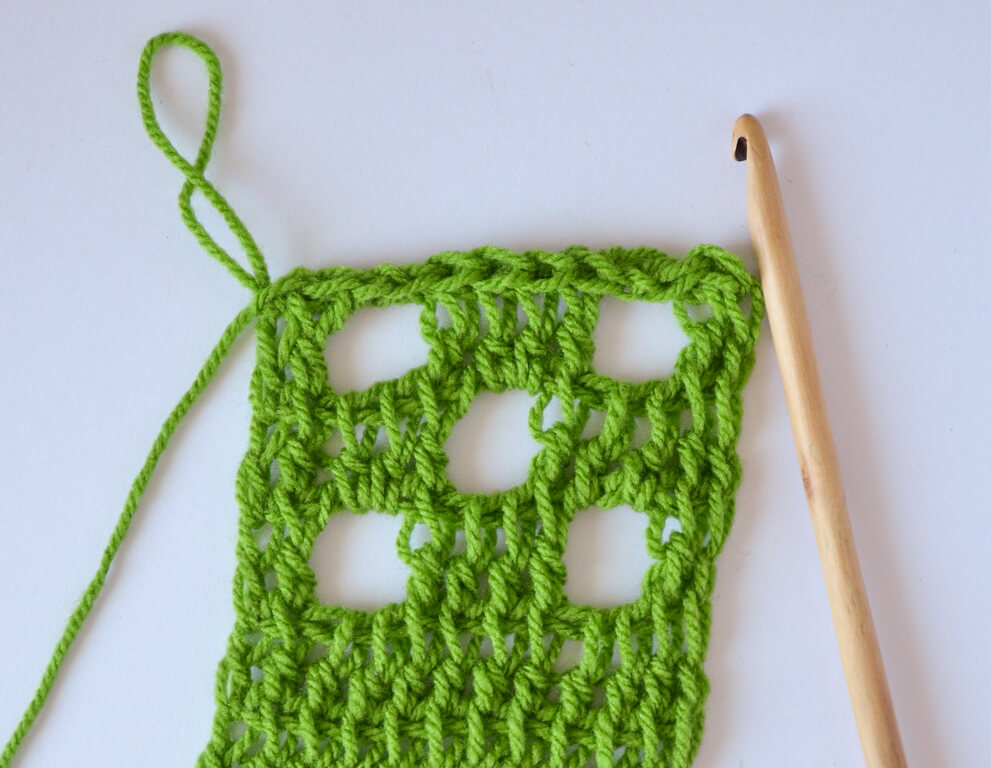
Keep going like this and you will finish your pattern in no time.
Below you’ll see a comparison between two samples made of the same yarn and with the same hook, but one is made with double stitches and one with extended double stitches.
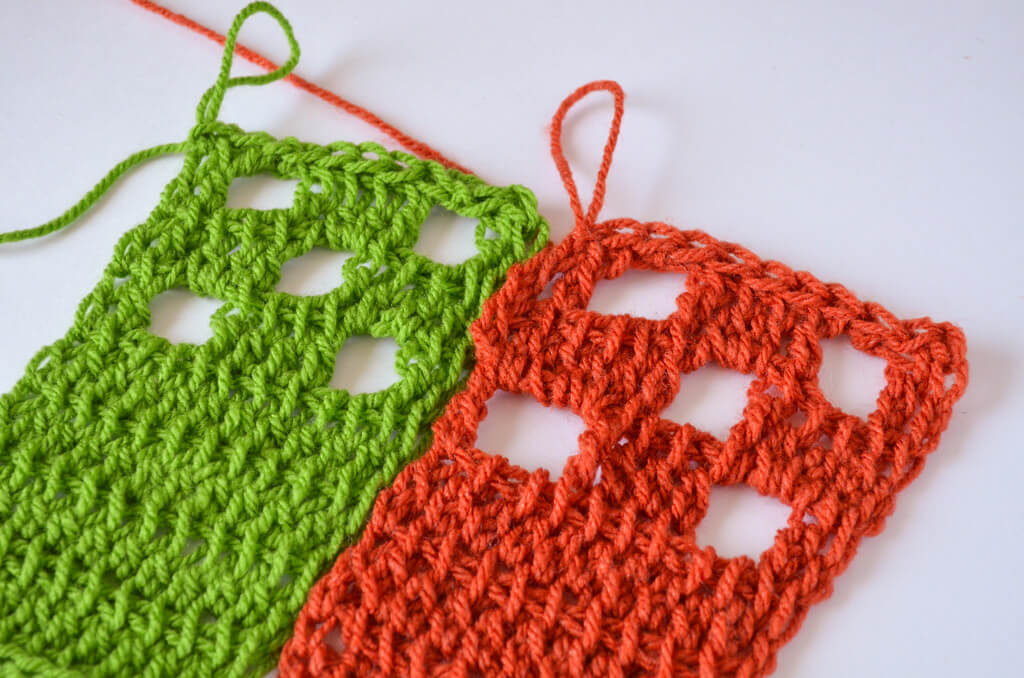
The difference is not great, but it’s there. The extended double stitches (orange sample) make the fabric slightly taller.
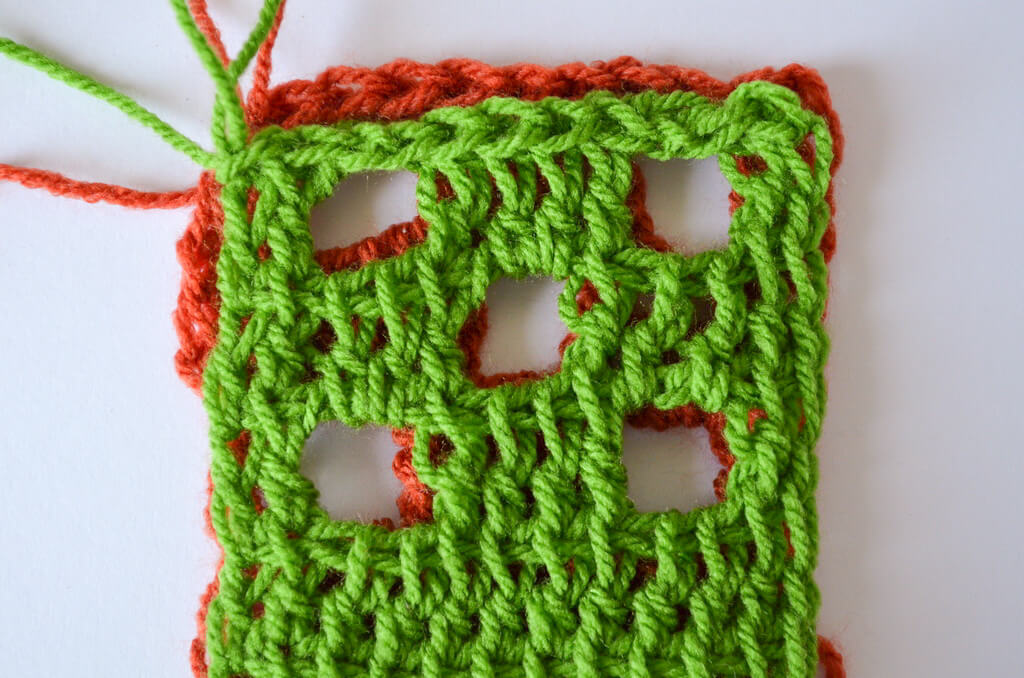
Troubleshooting
You may forget to make some yarn overs and only realize on the return pass. That’s not the end of the world.
You don’t have to frog the whole row, but can cheat. You can Ch1 and then YO and pull through the loop on the hook and the YO you didn’t forget.
This will essentially make an extended double stitch as the horizontal line in the pattern and the difference is not that large from the original treble.
If the stitches seem a bit wonky, try picking them up in the vertical and front horizontal bar at the top of the stitches.
If you prefer to not have the last stitch in the pattern, then start with one less chain and consider the last stitch as the edge of the pattern.
What can you make with filet Tunisian crochet?
Honestly? Anything, as long as you have the hook for it.
As always, you need to use a slightly larger hook with this technique than with regular crochet. The smallest Tunisian crochet hook with a cable that I have is 2 mm. That means I can make filet with lace-weight yarn.
Maybe you can find even smaller hooks and use them with crochet thread.
You can use old or new filet crochet patterns, like the wrap shown below, which comes with a filet chart and full stitch charts, so you can use either method.
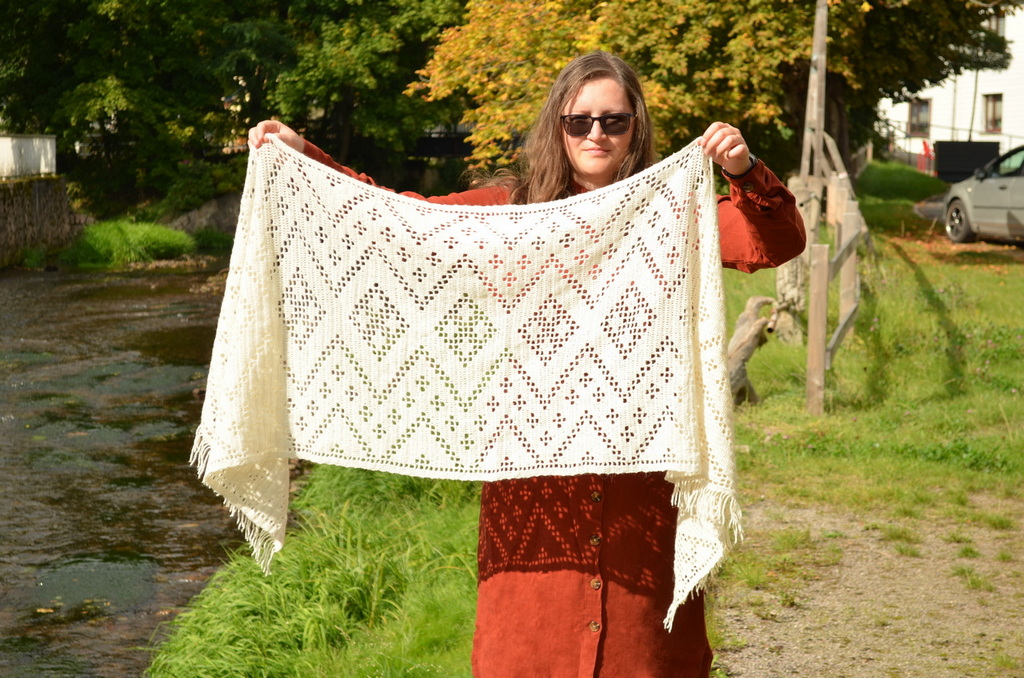
Video demonstration
If you prefer video instructions, please check them out below.
I show how to make filet crochet with both Tunisian double stitches and Tunisian extended double stitches.
Final thoughts
I hope you enjoyed this slightly different tutorial. It really made my gears turn, I hope it has yours too.
If you want more Tunisian crochet fun, then check out these patterns and stitches:
Tunisian crochet asymmetrical rounded triangle shawl tutorial
Free pattern for sideways Tunisian crochet beanie with elastic brim
Don’t forget to subscribe if you want to know when I publish new tutorials, videos and patterns.
Happy crocheting!
Hugs,
Andrea
